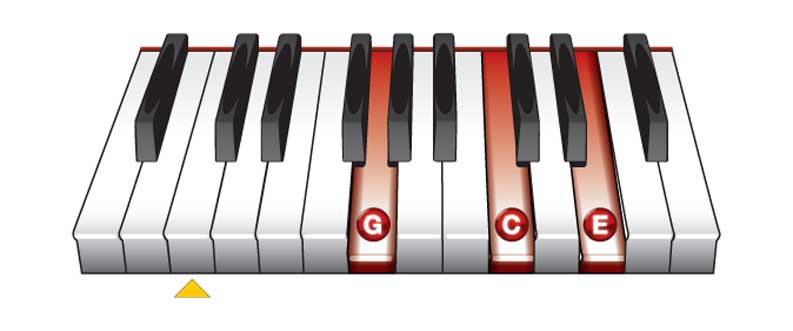
Chord Inversions
So far you have learnt the C, F and G major chords. Because the lowest note in each of these three chords is the root note, the shape given is called the root position.
All major chords contain three different notes. These notes can be duplicated and/or played in a different shape. When the third (3) is the lowest note of the chord shape, the chord is said to be the first inversion. The diagram below illustrates the first inversion of the C major chord, which contains the notes E (3), G (5), and C (1) in that order.
C Chord (first inversion)


Do not confuse the fingering numbers on the chord diagrams with the interval numbers of the chord.
When the fifth (5) is the lowest note of the chord shape, the chord is said to be the second inversion. The diagram below illustrates the second inversion of the C major chord, which contains the notes G (5), C (1), and E (3) in that order.
C Chord (Second inversion)

